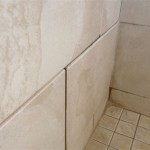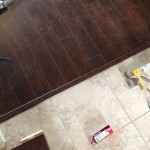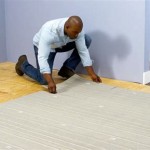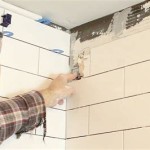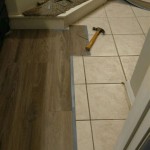How to Replace a Ceiling Tile with Sprinkler Head
Replacing a ceiling tile with a sprinkler head requires careful attention to safety protocols and adherence to building codes and regulations. This type of repair often occurs due to water damage, physical impact, or during routine maintenance. It's essential to understand the potential risks and necessary precautions before attempting this task. Improper installation or handling could compromise the sprinkler system's functionality, increase the risk of leaks, or even trigger accidental sprinkler activation, leading to property damage.
This article provides a detailed guide on how to replace a ceiling tile with a sprinkler head. It will cover the necessary tools and materials, safety precautions, and a step-by-step procedure to ensure the replacement is done correctly and safely. This guide assumes a basic familiarity with tools and construction techniques. If unsure about any aspect of the process, consulting a qualified professional is strongly recommended.
Key Point 1: Preparing For The Replacement
Before initiating any work, thorough preparation is crucial. This includes identifying the specific type of sprinkler head and ceiling tile, gathering the necessary tools and materials, and most importantly, ensuring the safety of the work environment.
The first step involves identifying the existing sprinkler head. Observe the head's type (e.g., pendent, upright, sidewall), its temperature rating (indicated by color coding), and its manufacturer. Note this information as it will be needed to source a suitable replacement if the existing head is damaged. It is paramount that the replacement head matches the specifications of the original to maintain consistent fire suppression capabilities throughout the building.
Next, assess the ceiling tile itself. Determine its dimensions (typically 2’ x 2’ or 2’ x 4’) and material (mineral fiber, gypsum, etc.). If the tile is significantly damaged beyond simple water stains, it will need to be replaced entirely, not just repaired. If color matching is crucial, sourcing a replacement tile from the same manufacturer and batch is recommended to avoid noticeable discrepancies.
Gather the following tools and materials:
- Replacement ceiling tile (matching the existing tile)
- Replacement sprinkler head (matching the existing head, if necessary)
- Utility knife
- Measuring tape
- Safety glasses
- Gloves
- Ladder or step stool (stable and appropriate height)
- Drop cloth or plastic sheeting
- Pencil or marker
- Sprinkler head wrench (specifically designed for sprinkler heads)
- Sprinkler head escutcheon (if applicable and being replaced)
- Vacuum cleaner (for cleaning debris)
Safety is paramount. Before starting any work near the sprinkler system, inform the building management or fire marshal, especially if the building is equipped with a monitored fire alarm system. Unnecessary activation of a fire alarm can lead to significant disruptions and costs. Place a drop cloth or plastic sheeting beneath the work area to protect the floor from falling debris and potential water drips.
Visually inspect the area around the sprinkler head for any signs of corrosion, leaks, or damage to the sprinkler piping. If such conditions are present, contact a qualified fire protection professional for a comprehensive inspection and repair before attempting any replacement work. Attempting to force a corroded or damaged sprinkler head can lead to serious plumbing issues.
Key Point 2: Removing the Old Ceiling Tile and Sprinkler Head (If Necessary)
This step requires careful execution to avoid damaging the surrounding tiles, the sprinkler system, or the structural components of the ceiling. If only replacing the ceiling tile, skip the steps involving sprinkler head removal.
Begin by carefully lowering the existing ceiling tile. If the tile is relatively intact, gently push it upwards to clear the grid system. Maneuver the tile to avoid scraping against the surrounding tiles or the sprinkler head. If the tile is significantly damaged and likely to crumble, carefully use a utility knife to score around the edges of the tile where it meets the grid. This will help to prevent tearing or damage to adjacent tiles. Gently lower the damaged tile, supporting it from below to minimize debris fallout. Place the removed tile on the drop cloth.
If the sprinkler head needs replacement due to damage or corrosion, proceed with extreme caution. Before attempting to remove the sprinkler head, ensure the main water supply to the sprinkler system is shut off. This is a critical safety precaution to prevent uncontrolled water discharge. The location of the main shut-off valve should be clearly marked and accessible. If the shut-off valve’s location is unknown, consult building management or a qualified technician.
Using a sprinkler head wrench specifically designed for the sprinkler head type, carefully loosen the sprinkler head. Apply steady, even pressure to avoid damaging the sprinkler piping or the head itself. Do not use excessive force. If the head is significantly corroded or seized, consult a qualified fire protection professional. Attempting to force a corroded head can cause significant damage to the piping system and potentially trigger a leak.
Once loosened, carefully unscrew the sprinkler head by hand. Be prepared for a small amount of residual water to drain from the piping. Have a bucket and cloth readily available to catch any drips. Discard the old sprinkler head according to local regulations.
If the escutcheon (the decorative plate around the sprinkler head) needs replacing, simply unsnap or unscrew it from the sprinkler head or surrounding collar. If it is stuck, use a small utility knife to carefully score around the edges where it meets the tile. Avoid damaging the ceiling tile surface.
Key Point 3: Installing the New Ceiling Tile and Sprinkler Head
This is the final and most critical step. Precise installation is essential for both the aesthetic appearance of the ceiling and the proper functioning of the sprinkler system. Accuracy and careful attention to detail are vital.
If installing a new ceiling tile, carefully measure the opening in the grid system. Compare these measurements to the dimensions of the new tile. If necessary, use a utility knife to trim the tile to the correct size. Ensure the cuts are clean and straight for a professional appearance.
Before installing the tile, inspect the back for any imperfections or loose fibers. Remove any debris that could fall onto the wiring or piping above the suspended ceiling. Carefully lift the new tile and angle it to fit through the grid opening. Gently lower the tile into place, ensuring it sits flush with the surrounding tiles.
If replacing the sprinkler head, ensure the replacement is the exact same type and temperature rating as the original. Applying thread sealant tape specifically rated for fire sprinkler systems to the threads of the new sprinkler head is recommended. Follow the manufacturer's instructions for application.
Carefully screw the new sprinkler head into the existing piping by hand, ensuring it is properly aligned. Then, use the sprinkler head wrench to tighten the head securely. Do not overtighten, as this can damage the sprinkler head or piping. Refer to the manufacturer's torque specifications for the appropriate tightening force. If torque specifications are unavailable, a snug fit with a slight additional turn is generally sufficient. The amount of turns will depend on the thread. The importantance is to not overtighten.
If installing a new escutcheon, snap or screw it into place around the sprinkler head. Ensure it is properly seated and covers the opening in the ceiling tile. The escutcheon should not interfere with the operation of the sprinkler head.
After installing the new sprinkler head, carefully inspect the connection for any leaks. If the main water supply was shut off, slowly reopen it and monitor the connection for any signs of drips or seepage. If leaks are detected, immediately shut off the water supply and re-tighten the sprinkler head or consult a qualified fire protection professional.
Once the new ceiling tile and sprinkler head are installed, thoroughly clean the work area. Remove all debris, tools, and materials. Vacuum the floor to remove any dust or fibers that may have fallen during the process. Ensure the area is free of any hazards.
After completing the replacement, inform building management or the fire marshal that the work is complete. If the fire alarm system was temporarily disabled during the process, ensure it is reactivated. Document the replacement, including the date, the type of sprinkler head replaced, and any observations made during the process. This documentation may be required for compliance purposes.
Regularly inspect the replaced ceiling tile and sprinkler head for any signs of damage, leaks, or corrosion. Promptly address any issues to ensure the continued integrity of the sprinkler system and the overall fire safety of the building. Consider establishing a routine maintenance schedule to periodically inspect all sprinkler heads and ceiling tiles throughout the building.

How To Install Ceiling Tile With Sprinkler Head In The Middle Skill Stacking

How To Remove And Replace A Ceiling Tile With Fire Sprinkler

How To Install Ceiling Tile With Sprinkler Head In The Middle Breakdown Skill Stacking

How To Remove And Replace A Ceiling Tile With Fire Sprinkler

How To Cut A Sprinkler Head Into Ceiling Tile

Ceiling Tile Sprinkle Hole Cutting Tricks

Replacing Escutcheons Using Retrofit Fire Sprinkler

How To Replace A Recessed Fire Sprinkler Escutcheon

Drop Out Ceiling Panels Ceilume

How To Replace A Recessed Fire Sprinkler Escutcheon
Related Posts

